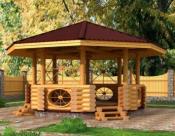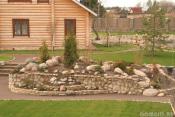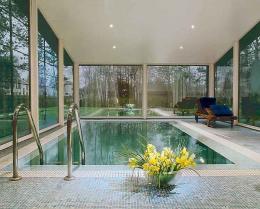Search
Login
Ventilation and dehumidifiers for pools - a guarantee of excellent conditions for maintaining the pool of a country house
Modern projects of country houses more and more often provide for the location of the pool, near which you can spend time and relax. Indoor pools designed for year-round use are becoming especially popular in Russia.
For a comfortable stay near the pool, it is necessary to take care of sufficient ventilation, the design of which has its own characteristics compared to the traditional ventilation system of residential premises.
Content
- The role of the ventilation system in the pool video
- Basic requirements for the ventilation system of the pool of a country house
- Pool Ventilation Solutions
- Pool ventilation calculation
The role of the ventilation system in the pool
Indoor private pools in country houses and cottages are of particular interest to people who support an active lifestyle. When equipping a pool in a house, it is necessary in a timely manner (at the design and construction stage) to organize good ventilation of the room. Indeed, the water surface is a constant source of moisture in the atmosphere (at an air temperature of 27 degrees, relative humidity of 50% and a water temperature of 26 degrees, approximately 230 g of moisture is released every hour from one square meter of water).

Lack of adequate ventilation leads to wet walls and the destruction of the finish in the room, the formation of condensation on the windows, ceiling and metal structures of the pool, corrosion. Long-term increased humidity is fraught with the appearance of mold and an unpleasant odor, the multiplication of fungi that are harmful to health, and the complete or partial unsuitability of the building.

In the design of pool ventilation, the main emphasis is on controlling the level of temperature and humidity in the room. High humidity creates a feeling of heavy air and discomfort in the room. An uncomfortable stay at the pool can be associated with improper temperature conditions, the presence of drafts or air stagnation due to low air exchange.
Thus, a competently equipped ventilation system of the pool performs the following tasks:
- maintaining the temperature regime;
- maintaining optimal room humidity;
- ensuring good air exchange.
Basic requirements for the ventilation system of the pool of a country house

Ventilation and dehumidification systems in the pools should provide a comfortable pastime, supporting certain parameters of air and water:
- the most permissible humidity in the room is 65%;
- the air temperature should exceed the water temperature by a couple of degrees (the optimum water temperature is about 25 degrees);
- air velocity 0.2 m / s (air exchange at a speed of more than 0.2 m / s will already be felt by a person and will accelerate evaporation);
- air should be directed along the walls without creating a draft (if there are windows in the room, the air flow will provide airflow and prevent fogging of the windows);
- in order to avoid penetration of moisture and odors into the premises adjacent to the pool, it is necessary to create a vacuum (air supply volume is less than the volume of air removed).

Pool ventilation can only be forced type, as natural circulation cannot provide the required parameters of the air environment indoors.
Pool Ventilation Solutions
dehumidifiers ideal for small pools
Pool dehumidifiers are freon units designed to maintain humidity levels by drying the air in the room.
Dehumidifiers have a hygrostat, which maintains the level of humidity, independently turning on and off. The principle of operation of dehumidifiers is to condense and remove excess moisture. The air leaving the dehumidifiers is warmed and dried.

Dehumidifiers for the pool differ from household models in higher power, resistance to moisture, a variety of installation. The performance of the dehumidifiers varies greatly (12-1000 liters per day), depending on the design (wall, mobile or duct dryer).

The most affordable are wall and floor (mobile) dehumidifiers for pools (you can buy them at a price of 500 US dollars). Among the most popular, wall mounted dehumidifiers for the Aerial, Aucma and Calorex pools can be distinguished.
In practice, the use of wall and floor dehumidifiers gives a visible result only in small pools, since their capacity does not allow to cope with the fumes of large pools.
The disadvantages of wall and floor dehumidifiers include:
- due to the uneven distribution of air in the pool, stagnant zones are formed;
- the operation of some models of dehumidifiers is accompanied by noise;
- air is not supplied to glazed surfaces (windows);
- location on the floor may cause some inconvenience in moving around the pool area.
When arranging a desiccant, some recommendations should be followed:
- floor condenser dehumidifiers must be located at a distance from the walls (0.2 -0.5 m);
- the dryer must not be covered with anything;
- do not place a dehumidifier near heating appliances.

The channel dehumidifiers for the pool are more powerful and have several advantages over wall and mobile dehumidifiers:
- drainage of air throughout the room (no stagnant zones);
- equipment is placed in a separate room and does not spoil the interior of the pool;
- indoor air exchange is more comfortable;
- silent operation of the device.
For country house pools, duct and wall dehumidifiers for Danterm pools can be used.
Dehumidifiers work for recovery without supplying clean air to the room, therefore they must be combined with a pool ventilation system.
combination of exhaust and supply system the most affordable option for pool ventilation
The cheapest way to organize ventilation of the pool is the joint use of two separate systems: supply and exhaust.
The supply system will be represented by the following equipment:
- an air intake device with a built-in valve, which will prevent cold air from entering the room in winter;
- supply fan;
- a filter to clean the outside air;
- a heater that will heat the incoming air in the winter.
Exhaust air will be discharged from the room using the fan integrated in the exhaust ducts.

The disadvantages of the typesetting ventilation system are its overall dimensions (often a separate room is required) and high electricity consumption during operation.
single supply and exhaust system saving space and space heating costs
Monoblock supply and exhaust ventilation includes an air supply network and a supply and exhaust installation. Such a system is compact enough, which is important for a country house, and is equipped with an automatic control device that allows you to accurately maintain the necessary air parameters.

You can give preference to the supply and exhaust system with a recuperator, which will help save up to 60% of the heat in the room, due to the heating of the supply air with exhaust heat. This will reduce the power of the heater by several times.
The forced-air and exhaust installation is completed:
- supply and exhaust fan;
- double valve;
- filter for incoming air;
- recuperator;
- outdoor air heater, which warms the air to the desired temperature, after processing in the recuperator;
- automation system (allows you to maintain humidity and air parameters).

Room ventilation with a uniform supply and exhaust system occurs evenly and does not require equipping the room with additional equipment (dehumidifiers). However, the use of air dryers will help reduce the cost of operating the system (electricity), making it possible to choose models with less power.
ventilation for large home pools
For large pools, both public and domestic, the optimal solution would be a stacked ventilation unit with the ability to drain the air. From the point of view of capital expenditures, this is a more expensive option, but in practice it is possible to achieve an excellent result (standard parameters of air) in a short period of time.

The type-setting installation is equipped with all the necessary functions:
- heating and cooling air;
- filtration and dehumidification of air;
- thermal recuperator;
- supply of fresh and intake of exhaust air;
- automation system.

The use of typesetting ventilation units allows you to do without additional heating and air conditioning systems. The installation is fully automated and selects the most economical mode of operation to maintain the specified parameters at any time of the year.
Pool ventilation calculation
design features of the ventilation system for the pool
The ventilation system of the pool is a complex engineering structure in which all parameters must be calculated accurately. Pool ventilation cannot be done by eye.

There are some features of the pool ventilation system that should be considered in the project:
- In order for the surface of the ventilation shaft not to deteriorate under the action of condensate, it must be covered with insulating material. Perhaps the use of valves with electric heating.
- Trays for collecting condensate must be provided in the ventilation shaft.
- Since the pool in the country house is used less frequently than the public pool, there is a need to install equipment with less power (for a non-operational period) and an additional device that will be included in the operation when using the pool.
- When choosing a ventilation device, it is necessary to take into account: the area of \u200b\u200bthe room, the possibility of heating the room, the calculated values \u200b\u200bof the evaporating moisture and the amount of supply air.
- As a rule, the ventilation system of the pool is equipped separately from the general ventilation of the house.
- It is good if the shuttering of the pool is provided, this will reduce evaporation from water, and reduce the release of moisture into the environment.

ventilation calculation basics
Ventilation must fully ensure the removal of excess moisture, maintaining an optimal parameter of 50-65%. It is important to choose the right ventilation unit and design the ventilation of the pool.

The calculation includes a number of calculations that are based on the following indicators:
- total area of \u200b\u200bthe room;
- basin bowl area;
- total area of \u200b\u200bbypass paths;
- incoming air temperature in summer and winter;
- air temperature in the house;
- water temperature;
- average number of people regularly visiting the pool.
The project takes into account the following calculations:
- The amount of evaporated moisture in one hour. The indicator is taken from special tables and depends on temperature and relative humidity, as well as on water temperature. With standard parameters, the moisture in the air is in the range of 200-280 g / sq.m.
- The amount of incoming heat. The total value of heat input from lighting, solar radiation, swimmers, and water heating is taken into account.
- The amount of supply air. This indicator will determine the power of the ventilation unit. The calculation takes into account the amount of evaporated moisture from the surface of the water, as well as atmospheric humidity. It should be noted that at different times of the year, air humidity ranges from 2g / kg in the summer to 12g / kg in the winter. Usually, 9g / kg is taken into account.
For more accurate calculations, ventilation project developers use specialized software.

Calculation and installation of the ventilation system of the pool is best left to professionals. Properly designed ventilation will guarantee a pleasant microclimate and safety for vacationers, as well as ensure the durability, coordination of the system and its economic feasibility.





